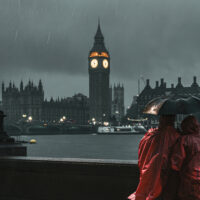
Art & Culture
Five postmodern architecture delights around the Royal Docks
The Royal Docks were dreamt up during the Victorian period, so it’s no wonder that this is its prevailing architecture. But a lot has happened since the docks were built between 1855 and 1921, and today, just as many buildings around the Royal Docks stem from the postmodern architectural era.
“PoMo'' came along in the 1970s as an electric and colourful building style. It often has playful elements and uses mixed materials and unexpected shapes, such as pipes or tubes, or a curved roof – it really needs to be seen to be fully appreciated.
Here are some of our favourite postmodernist architecture gems around the Royal Docks.
Adding a sense of joy into the practical, the Royal Victoria Tidal Basin Pumping Station.
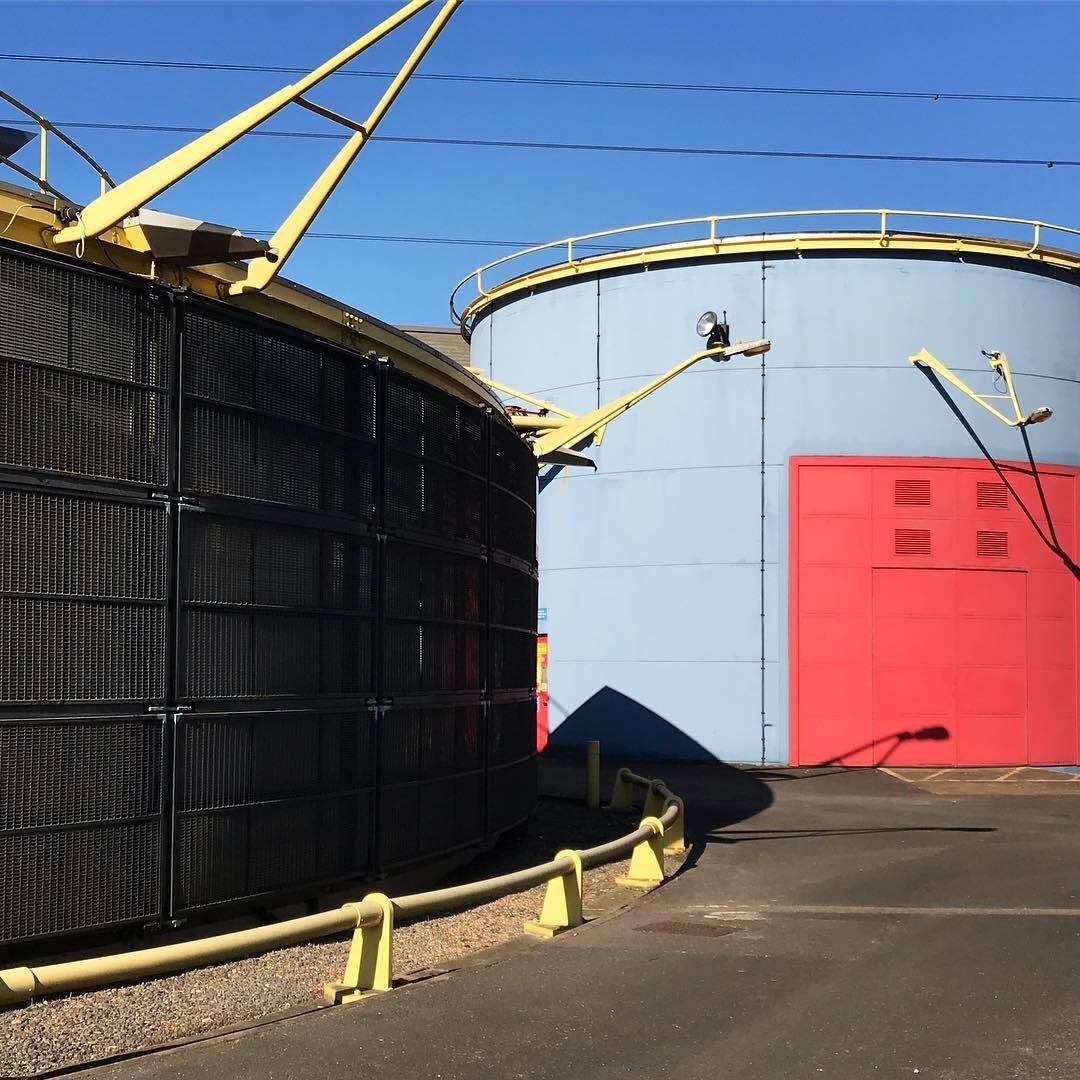
Built for function, giving us a peek
The Tidal Basin Pumping Station
Location: Royal Victoria Dock
Date: 1988
Design: The Richard Rogers Partnership
You have probably noticed the bright blue circular building between the new City Hall and the DLR station – it’s hard to miss with its green, red and yellow piping, which adds unexpected cheer to this practical structure. The shape is determined by its function, while the colours are inspired by our maritime traditions. It adds “a sense of joy” into a practical building, say the architects, who generously left the pipework visible to the passers-by in order to give us a glimpse of what goes on in there. The Tidal Basin Pumping Station is one of three pumping stations in the Royal Docks (the other are in Gallions Reach and North Woolwich) that work to prevent the area from flooding by directing surface water towards the river – a constant task when living on former marshland.
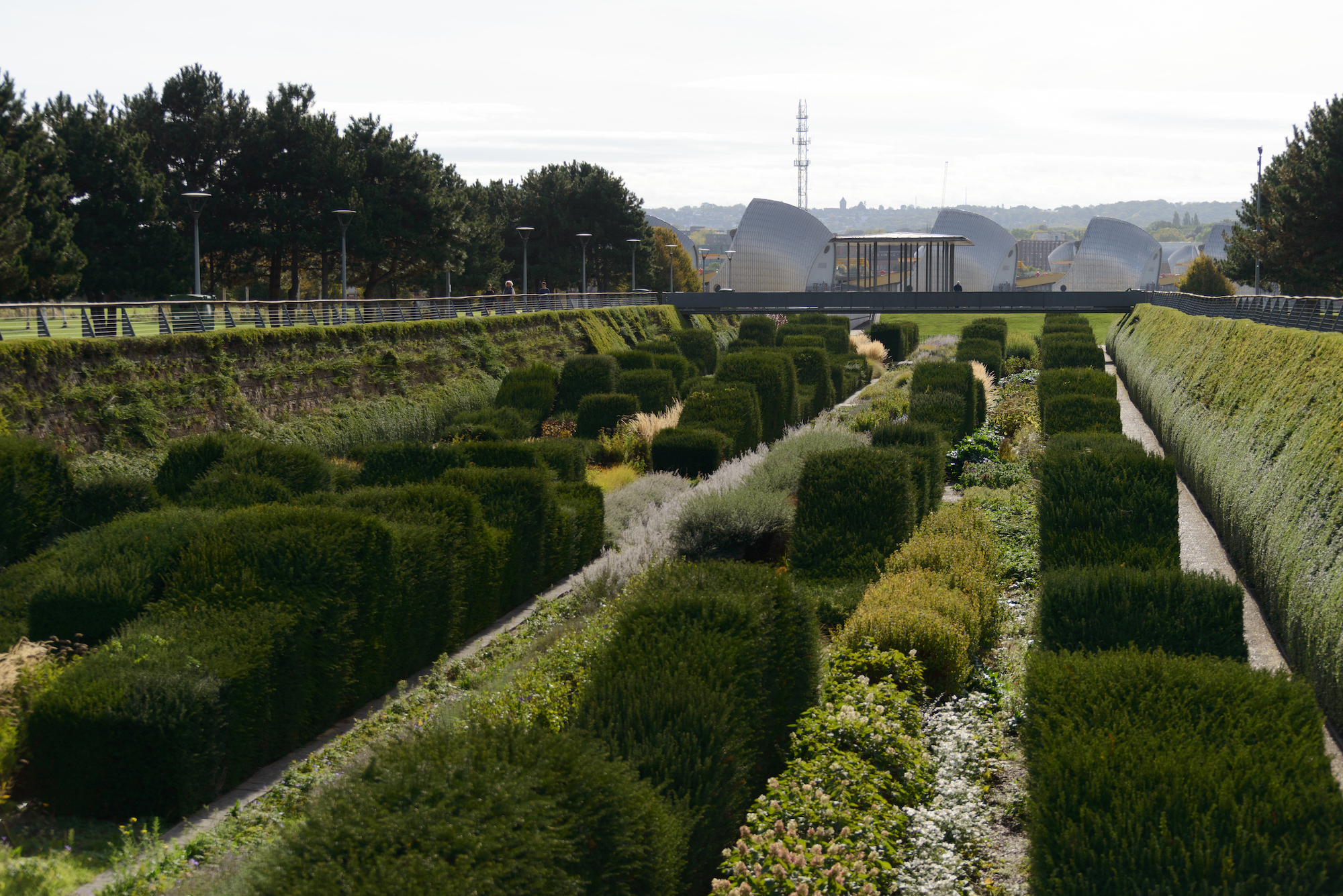
“PoMo'' often has playful elements and uses mixed materials and unexpected shapes, such as tubes or curves.
Photo credit for this and the main photo: Tian Khee Siong.
Sleek lines among the trees
Thames Barrier Park
Location: Silvertown
Date: 2000
Design: Allain Provost (Groupe Signes) and Patel Taylor
The Thames Barrier itself came first (built between 1974 and 1982), and as a postmodern masterpiece in its own right, it often steals the architectural limelight. But we want to highlight Thames Barrier Park for its exceptional design as well – this space stand on its own as a stylish, well-regarded example of postmodernist design in London. This park, which was just refreshed for its 20th anniversary, has all the inventiveness and fun of PoMo, but at the same time there’s a sense of timelessness with its sleek lines and well-thought-out design. When it was built, Thames Barrier Park was seen as a signal of intent – we’re building this great park here with more things to come – that’s certainly turned out to be the case.
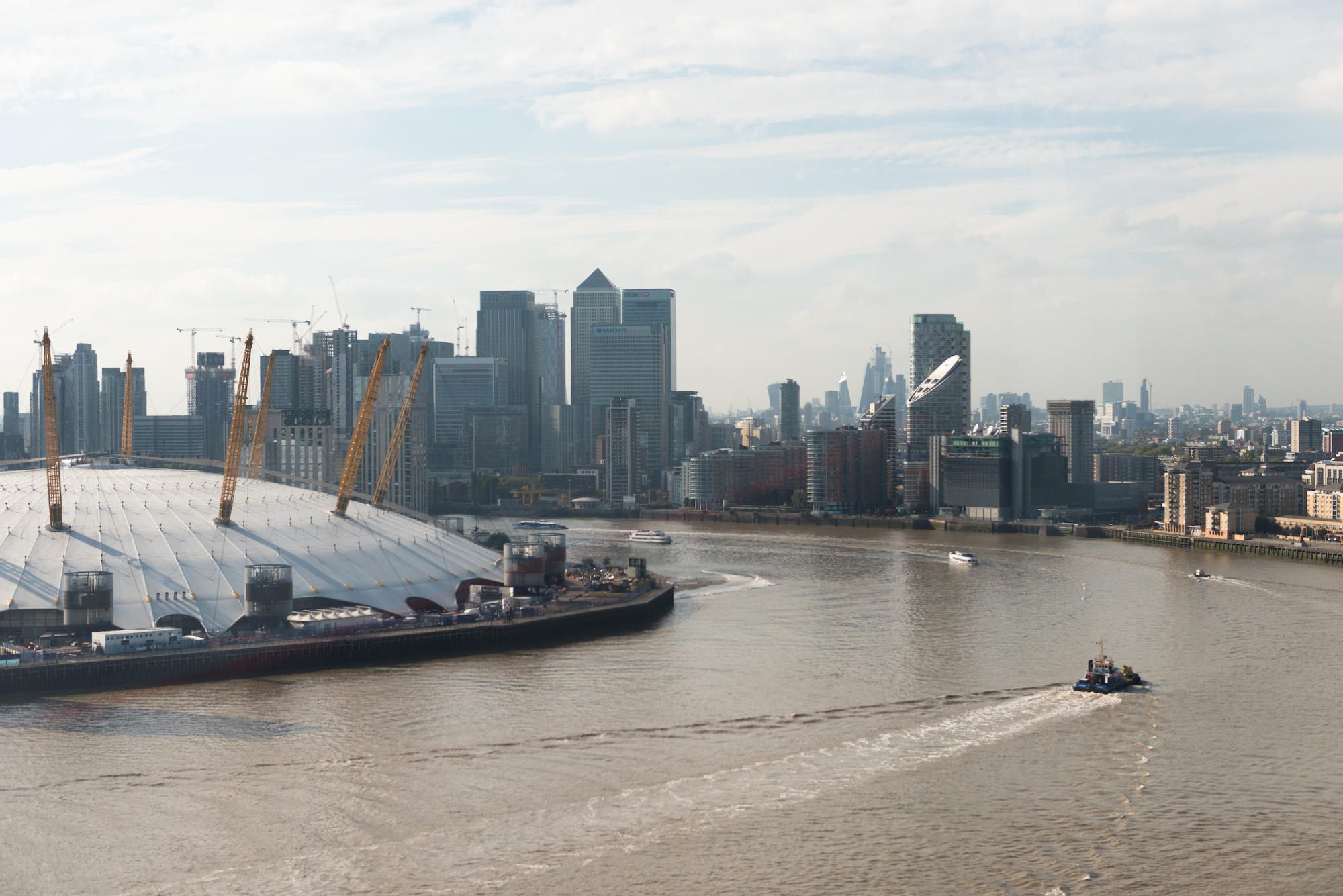
The Millennium Dome design stands as a testament to optimism and innovation ahead of a new millennium, and to hope for the future.
Photo credit: Tian Khee Siong.
A modern classic inspired by time itself
The O2 Arena (The Millennium Dome)
Location: North Greenwich, with a view from the Royal Docks (and from space)
Date: 1999
Design: The Richard Rogers Partnership
The O2, or the Millennium Dome as it was originally called, looms large over the Royal Docks – as the largest dome-shaped tensile structure in the world, you can literally see it from space. The design process was similarly grandiose, drawing inspiration from nothing short of time and space itself. The architects looked to the trajectories of stars and comets to create the panels on the canopy. The nearby Greenwich meridian also led to several poetic references to time (you can read about this here). The structure stands as a testament to optimism and innovation ahead of a new millennium, and to hope for the future.
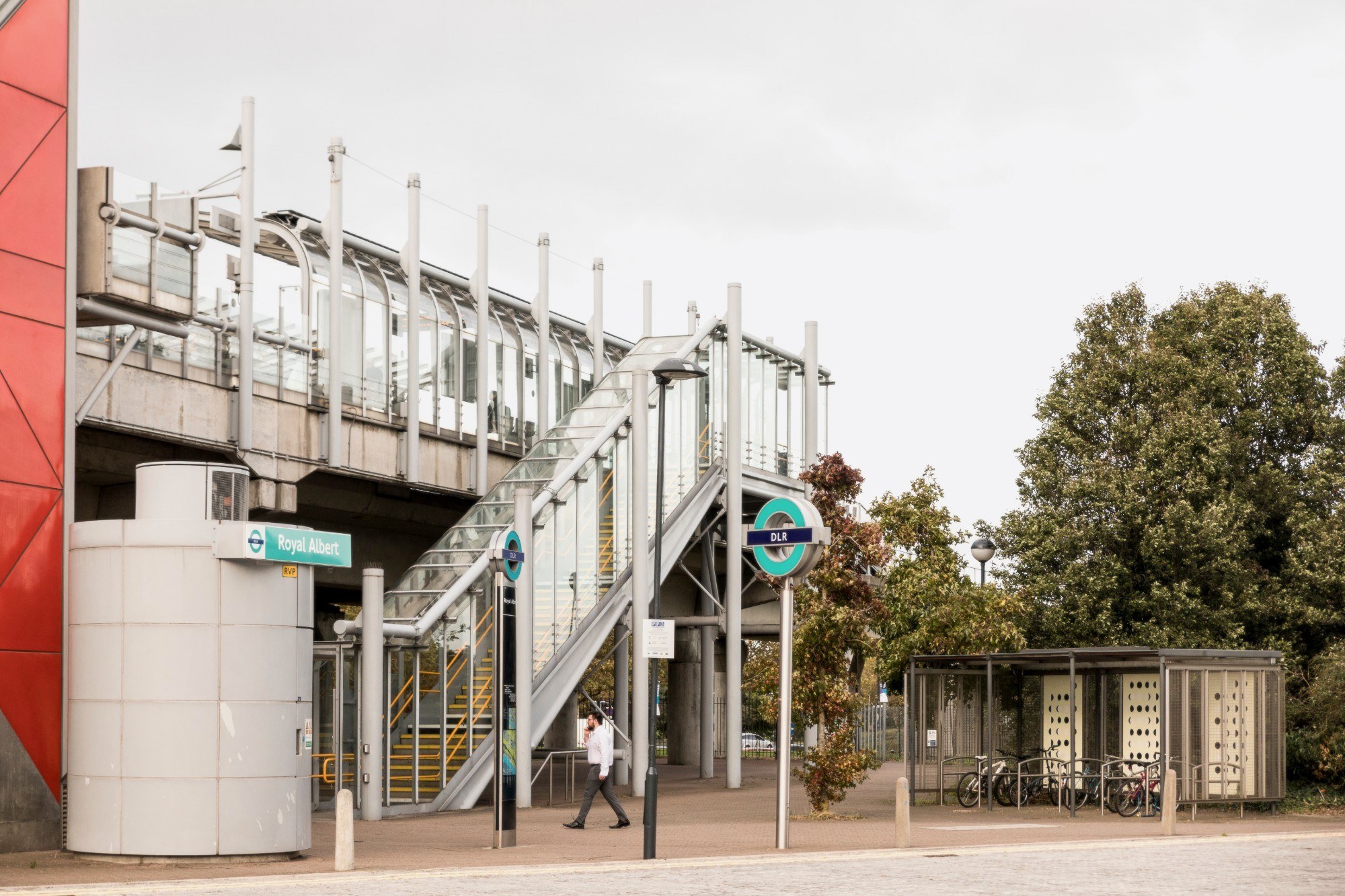
Many of the DLR stations around the Royal Docks look similar because they were often designed in bulk, using the same components.
Photo credit: Sam Bush.
Light railway, light fun
Royal Albert DLR station
Location: Royal Albert Wharf
Date: 1994
Design: Ahrends, Burton & Kolarek (ABK)
Many of the DLR stations (soon to number 12) around the Royal Docks look similar to one another – this is because they were often designed in bulk, using the same components and simply adjusting the details to suit the individual site. We’ve picked Royal Albert as a representation of the area’s DLR stations, most of which are simple yet striking examples of postmodernist architecture. At Royal Albert you have the curved shapes, the use of playful elements with tubes and rounds, and of course, the bright red tower that ends at a point.
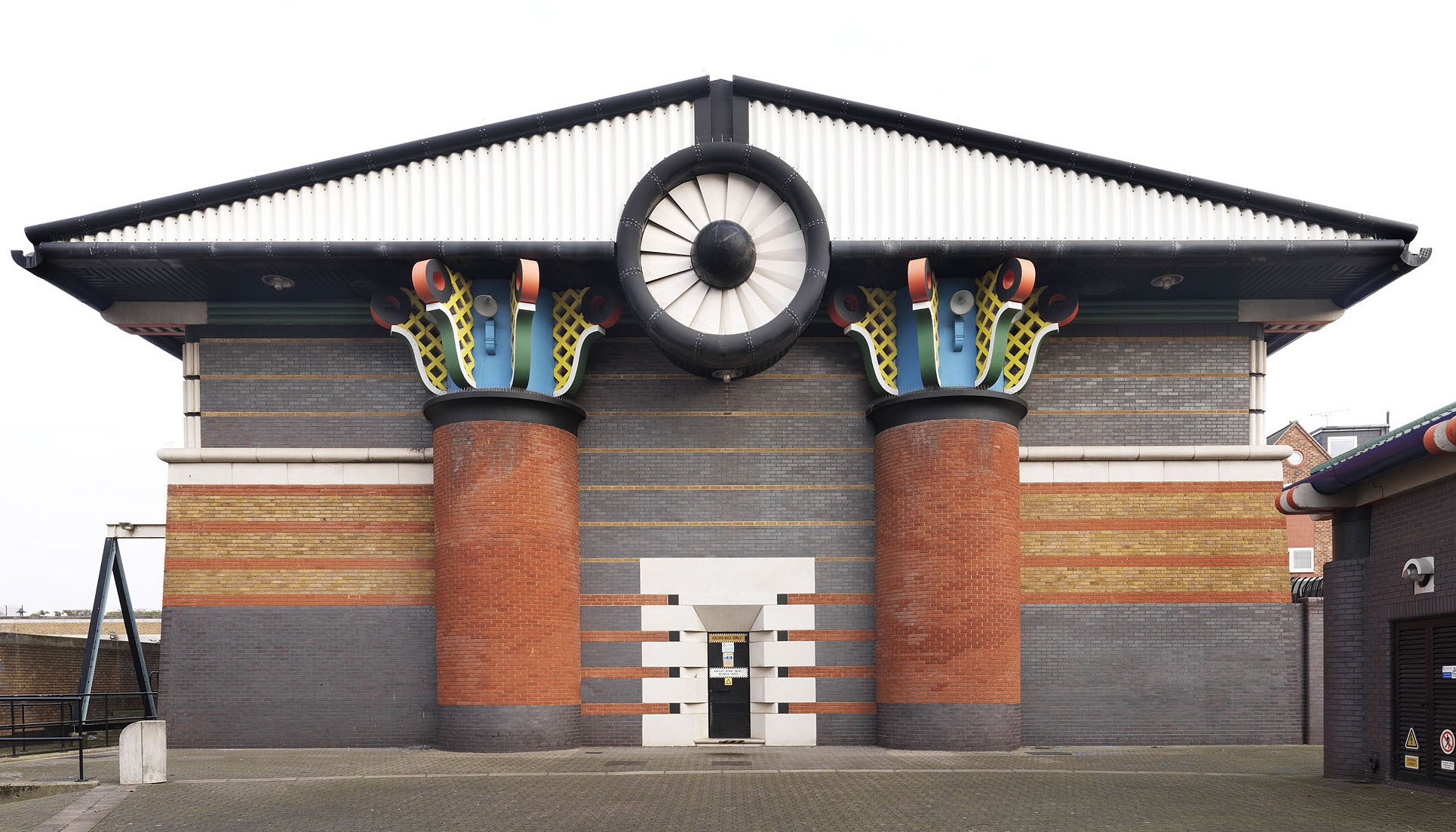
The Isle of Dogs Storm Water Pumping Station is also called the Temple of Storms.
Photo courtesy of Historic England / James O. Davies.
A delightful postmodern rebellion
The wider docklands is flush with postmodern architecture, and we wouldn’t feel right if we didn’t highlight two particularly spectacular specimens in our neighbouring Canary Wharf. First of all there’s the Limehouse Link portal from 1993, which marks the 1.8 km long road tunnel linking Canary Wharf to Limehouse. Built with all of postmodernism’s proudest shapes and colours, the portals (the Canary Wharf one, located next to Cineworld, has a twin in Limehouse) are adorned with large scale abstract art. On the Canary Wharf side you can find a 25ft high piece of Kilkenny limestone by Michael Kenny called “On Strange And Distant Islands” – we did say postmodernism is eclectic, didn’t we. Speaking of which – the docklands’ most spectacular PoMo example of all is the Isle of Dogs Storm Water Pumping Station in Cubitt Town. This Egyptian-inspired spectacular was designed to resemble a funeral pyre floating on the River Nile, symbolising the river of life – designer John Outram calls it the “temple of storms”. Now that’s something to see.
Share your favourite postmodern architectural finds around the Royal Docks with us on social media, using the hashtag #YourRoyalDocks


